31 Chairs that Shaped Us: Important Seats in History
Musing on human progress by highlighting important chairs in history.
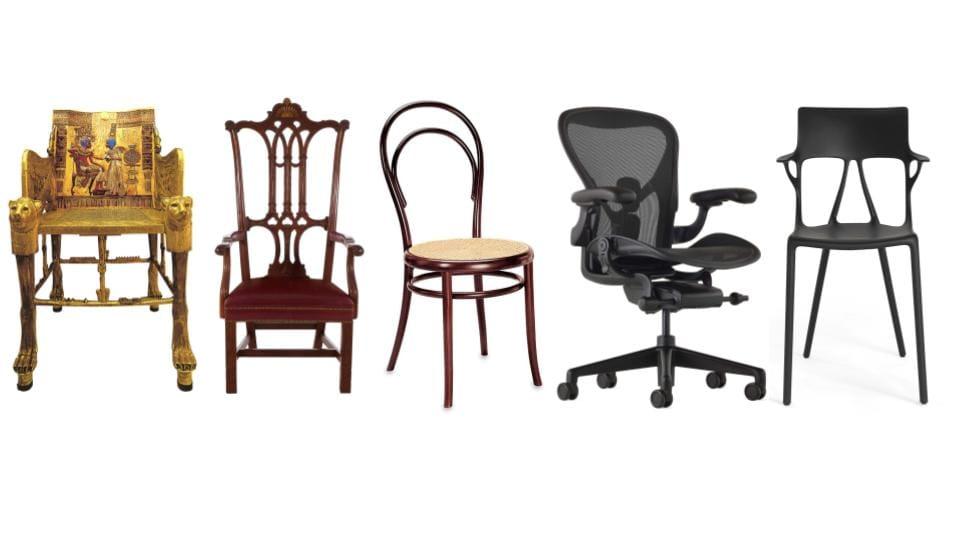
From the seat of divine right to a universally accessible mashup with machines, we shape chairs that in turn shape us.
Yes, seeing Tutankhamun's throne in the same list as a standard issue office chair may be jarring. Equally jarring is the distance between the worlds that shaped each respective piece. That magnificent throne alludes to Egypt's wealth, artistry, and the divine status of its rulers. The office chair eludes to democratic values, individual work and well-being, and advances in production and material science.
Indeed, where we sit mirrors our evolving relationship with our environment and ourselves. Some chairs through history have captured the ethos of the time and our collective imagination for years to come. This lineage of iconic chair design points to evolution in our social structure, technology, and aesthetics.
Divine Authority and Technical Mastery (pre 15th Century)
1. The Throne of Tutankhamun (Egypt, c. 1332 BC)
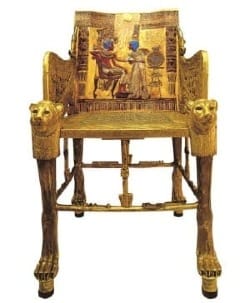
Before furniture was for everyone, it was for Kings. This ancient throne is not just a seat but a portal to the divine, inferring the pharaoh's godlike status. Crafted with exquisite materials like gold, ebony, and ivory, the throne is rich with symbolism of religion, social hierarchy, and wealth.
2. The Klismos Chair (Greece, c. 50 BC):
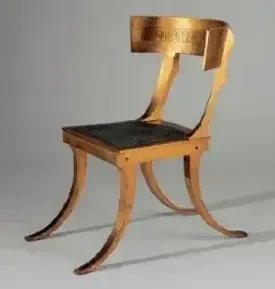
Mentioned in the Iliad, the Klismos chair is a testament to Greek innovation and design excellence. Its creation involved mastering the long and elegant curve that defines its silhouette, which highlights the Greek's advanced woodworking skills.
3. The Triclinium (Rome, c. 800 BC – 500 AD):
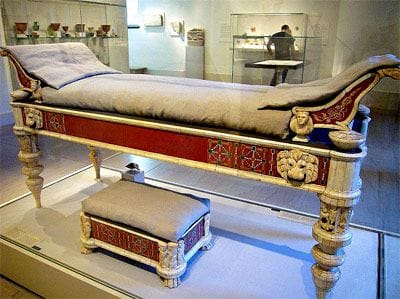
The Triclinium, or dining couch, was central to Roman dining, and Dining was the defining ritual in Roman domestic life. Meals would last from late afternoon through late at night, and diners would recline while eating,
4. The Ivory Throne (Roman Empire, 6th Century):
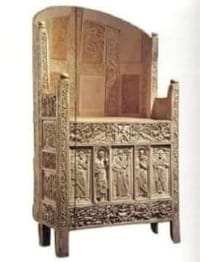
The Throne of Maximian was crafted around 547 AD for Maximianus, the Bishop of Ravenna. It depicts various religious scenes in ivory, including episodes from the life of Christ, saints, and angels, showcasing the exceptional skill of Byzantine craftsmen. This throne is a symbol of ecclesiastical power and a celebrated artifact of early Christian art.
5. The Horse-shoe Back Armchair (China, 14th Century)
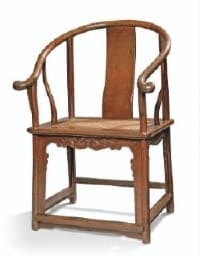
Crafted from precious hardwoods during the Ming period, this chair is distinguished by its curved, circular backrest resembling a horseshoe, which seamlessly merges into the armrests and so demonstrates the sophisticated joinery techniques of the time. The chair's design emphasizes harmony and balance, characteristics revered in traditional Chinese aesthetics.
6. The Glastonbury Chair (England, 15th Century)
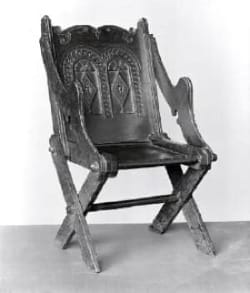
A symbol of Christian heritage in Britain and associated with Glastonbury Abbey, the chair was designed from instructions from Saint Joseph of Arimathea. Crafted from wood, it features a Gothic design with a high back, armrests, and intricate carvings that express medieval craftsmanship.
Symbols of Power and Status (c. 1660 - 18th Century)
7. The Savonarola Chair (Italy, 15th Century)
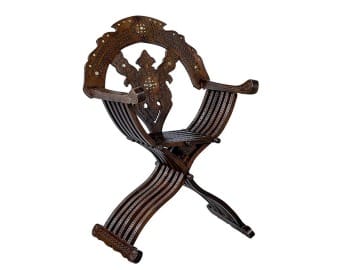
The Savonarola chair, a Renaissance innovation, echoed ancient Roman style with its foldable X-shape, symbolizing status. Named after Girolamo Savonarola, it was crafted from walnut, often gilded, embodying the era's mix of artistry and historical appreciation.
8. The Louis XIV Armchair (France, c. 1660)
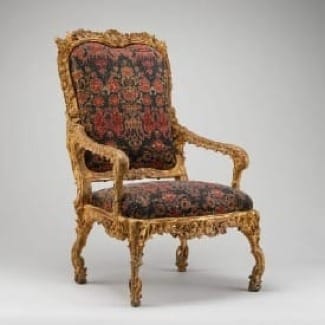
The Louis XIV Armchair epitomizes the grandeur of the French Baroque period, particularly under Louis XIV, the Sun King. Characterized by its lavish materials, including giltwood and upholstered in luxurious fabrics, the armchair features intricate carvings of flowers, shells, and classical motifs. The chair is designed for comfort but also asserts power and prestige.
9. The Stool of Ashanti Chiefs (Ghana, c. 1700)
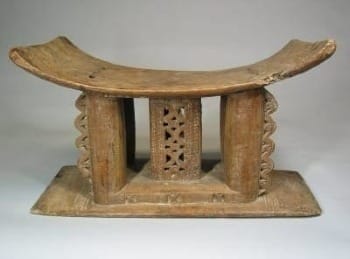
Carved from a single block of wood, this stool is a sacred emblem of leadership and lineage in Ashanti culture. These stools were believed to house the spirit of the Ashanti people. In the ceremonial inauguration of a stool, the chief is symbolically united with the ancestors and the community for cultural continuity.
10. The Adjustable Piano Stool (France, 18th Century)
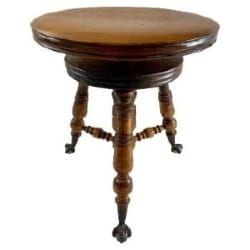
The adjustable piano stool of the 18th century, with its height adjustment mechanism, exemplified the era's enchantment with "automata" and the growing prominence of piano music among the aristocracy.
11. The Chippendale Chair (England, Mid-18th Century)
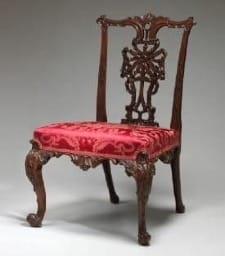
British cabinet-maker Thomas Chippendale heralded a new era of furniture design with his book "The Gentleman and Cabinet Maker's Director" (1754). He blended elements from Gothic, Rococo, and Chinese styles, showcasing intricate carvings, elaborate backrest patterns, and a strong yet elegant structure. These chairs were crafted primarily from mahogany, favored for its durability and deep hue.
12. The Windsor Chair (England, 18th Century)
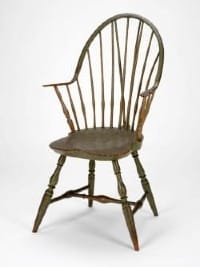
This chair is known for its features – a solid wooden seat into which the chair-back and legs are directly inserted, a hooped back supported by spindles, and its often armless design. Crafted initially from local woods like ash, elm, and yew, the design made it easy to produce and so popular in both rural and urban settings.
You can find several modern renditions of this chair here.
13. The Chesterfield Chair (England, 18th Century)
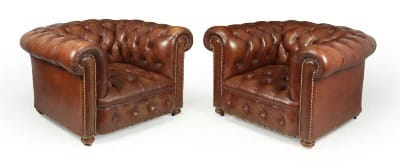
This chair is iconic for its deep buttoned upholstery, high rolled arms, and equal back and arm height. Emblematic of British elegance and comfort, it's crafted from rich leather or plush fabrics. It has occupied sophisticated interiors for centuries.
You can find several modern renditions of Chesterfields here.
14. The Rising Sun Armchair (USA, 1787)
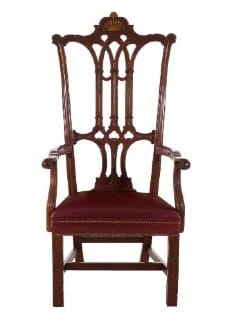
The "Rising Sun Armchair" famously used by George Washington during the 1787 Constitutional Convention, is one of the most iconic pieces of U.S. history. Housed in Independence Hall, this chair is distinguished by a sun carved into its crest, symbolizing the birth of the nation with the hopeful beginnings. Unlike Tutankhamen, George Washington willfully relinquished his chair.
Innovation in Comfort and Practicality (18th Century - 1956)
15. The Shaker Chair (USA, Late 18th Century)
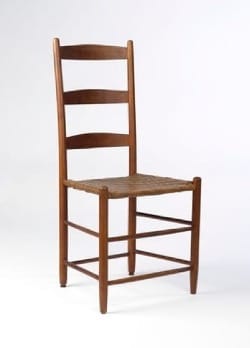
This chair reflects the Shaker community's ethos of simplicity, utility, and craftsmanship. This religious sect valued minimalism and functionality and so valued the chair's straightforward, durable construction.
16. The Thonet No. 14 Chair (Austria, 1859)
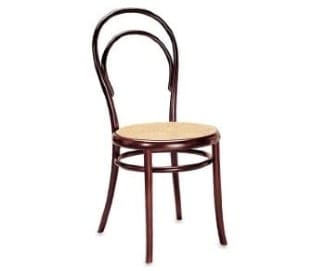
Michael Thonet's No. 14 Chair, with its pioneering bentwood technology, marked a new era in furniture mixing design simplicity with mass production. Its iconic curved backrest and lightweight design made it ubiquitous in European cafés, earning it the nickname "the café chair."
17. The Red and Blue Chair (Netherlands, 1917)
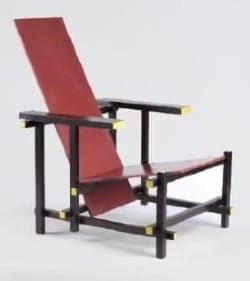
Gerrit Rietveld's chair emphasizes primary colors and geometric, showcasing principles of the De Stijl movement. Its influence on design is marked by its clarity and bold approach to form and color.
18. The Barcelona Chair (Germany, 1929)
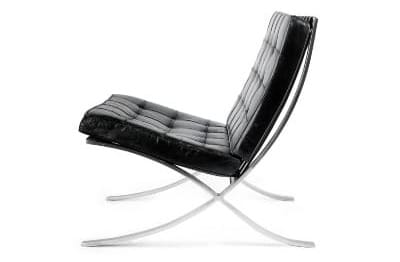
The Barcelona Chair by Ludwig Mies van der Rohe, designed for the 1929 International Exposition, epitomizes modernist elegance with its "less is more" approach, featuring sleek lines and a chrome frame.
19. The Zig-Zag Chair (Netherlands, 1934)
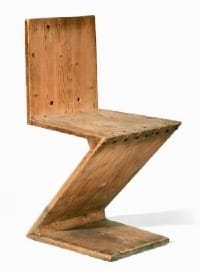
The Zig Zag Chair, designed by Gerrit Rietveld between 1930 and 1934, is a legless, minimalist chair made from four flat wooden slabs arranged in a Z-shape, originally crafted in elm but now typically in pine.
20. The Wishbone Chair (Denmark, 1949)
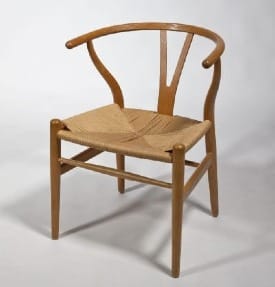
The Wishbone Chair, designed by Hans J. Wegner, with its distinctive Y-shaped backrest and elegant, curved lines, embodies the principles of simplicity, functionality, and beauty that are hallmarks of Scandinavian design.
You can find several modern renditions of this chair here and here.
21. The Eames Lounge Chair (USA, 1956)
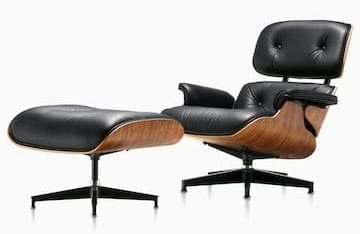
Charles and Ray Eames revolutionized post-WWII American design, creating iconic pieces like the 1956 Eames Lounge Chair, a symbol of modern American style. This lounge chair captivated the design world with its blend of style, materials, and ergonomic design, encapsulating the mid-century modern ethos of accessibility, aesthetics, and comfort.
Modernist and Futuristic Design (1917 - 2019)
22. The Tulip Chair (USA, 1956)
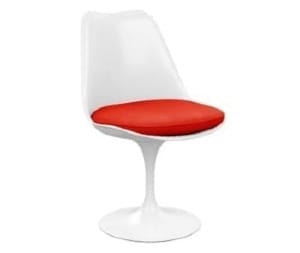
Eero Saarinen's design reduces clutter with its single, fluid form, embodying modern design's clean lines and simplicity. The use of fiberglass for the chair's seamless structure and aluminum for its base challenged traditional furniture construction and set new standards for furniture design and production.
23. The Panton Chair (Denmark, 1967)
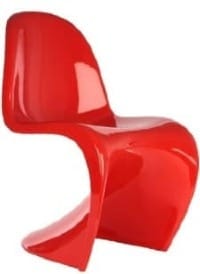
Designed by Verner Panton in 1967, this chair is renowned for its innovative S-shaped curve and seamless, all-plastic construction. As the first single-form, single-material chair, it broke new ground in furniture design, showcasing futuristic aesthetics and the possibilities of plastic as a material. The chair also embodied the fluidity of the 1960s and so became an icon of modern design.
24. The Sacco Chair (Italy, 1968)

The Sacco chair, created in 1968 by Piero Gatti, Cesare Paolini, and Franco Teodoro for Zanotta, revolutionized informal seating with its innovative, formless design. As the original bean bag chair, filled with polystyrene beads that mold to the user's shape, it symbolized the 1960s' counterculture movement, marking a shift towards more casual and adaptable interior design.
25. The Onda Bench (Brazil, 1971)

The Marquesa Bench, designed by Brazil's famed architect Oscar Niemeyer, is sculptural art. It features fluid, wave-like curves that reflect Niemeyer's wish to blend function with the poetry and beauty of Brazil's landscapes. These benches dot Brazil, as Niemeyer believed that beautiful, thought-provoking design should be accessible to everyone, not just the elite.
26. The Papasan Chair (Philippines, 1970s)

The chair, with its round cushion and rattan frame from the Philippines, became popular in the 1970s for blending comfort with an exotic design, reflecting Western interest in global styles. It was favored in casual, cozy settings.
You can a modern renditions of this chair here
27. The Poäng Chair (Sweden, 1976)
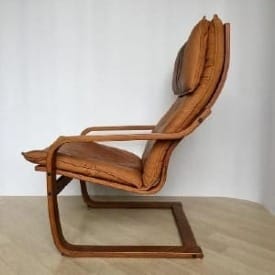
Designed by Noboru Nakamura for IKEA, this chair embodies Swedish design with its functional, simple, and comfortable style. Its flexible bentwood frame and comfortable cushion make it a modern design icon, known for affordability and versatility in different interiors. It is still available and iconic of IKEA today.
28. The Aeron Chair (USA, 1994)

Launched in 1994 by Don Chadwick and Bill Stumpf the Aeron Chair transformed ergonomic office seating with its body-conforming mesh fabric, emphasizing comfort and health. Garnering widespread acclaim, including numerous awards and a place in MoMA's collection, it has become a global office staple, also popular in gaming for its versatile appeal.
You can find several modern renditions of this chair here.
29. The Grand Repos (2011)
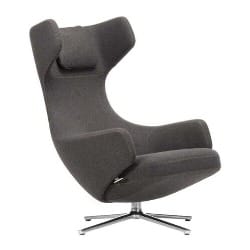
Created by Antonio Citterio and produced by Vitra, the reclining, swivel-based Grand Repos with its generous padding, embodies the shift towards residential comfort in workplace and public settings.
30. The Carbon Balloon Chair (2013):
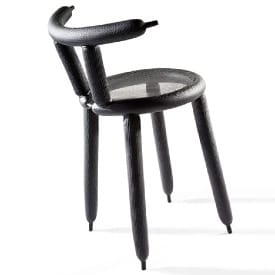
Designed by Marcel Wanders , the chair is crafted entirely from carbon fiber. Carbon fibre, with its exceptional strength-to-weight ratio, is crucial to modern parts from aerospace to sporting goods. The chair weighs just a few pounds.
31. The A.I. Chair (2019):
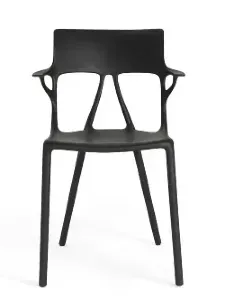
Resulting from a collaboration between Kartell, Philippe Starck, and Autodesk, the chair is the first designed to be designed by artificial intelligence alongside human designers. It is optimized for strength, stability, and comfort, reducing material use. The chair offers hope as to how AI and human creativity can work together.
Where will we sit? (Present - ?)
In simply cataloging chairs, we have moved from a rigid social hierarchy and divine right to a collaboration that marries man and machine.
What comes next? What new designs will influence and accommodate the ever-evolving human narrative? What values will imbue this design?
Time alone will reveal. But we do know whatever iconic chairs emerge, they will become a marker of cultural identity and a testament to human expression.
The changes on the horizon promise to be both transformative and enduring, inviting us to imagine how future generations sit in the spaces around them.

Geoff Abraham
Co-founder & President of Spoken
Geoff is the co-founder and President of Spoken. He is a Dad. He holds a BA from UT Austin (Plan II) and an MBA from Stanford. Geoff has built several successful businesses, including a bicycle taxi business in San Francisco which he ran for 10 years with his wife, Mimosa. He is an executive coach, and he actively invests in seed-stage startups via The Explorer Fund.
Read more